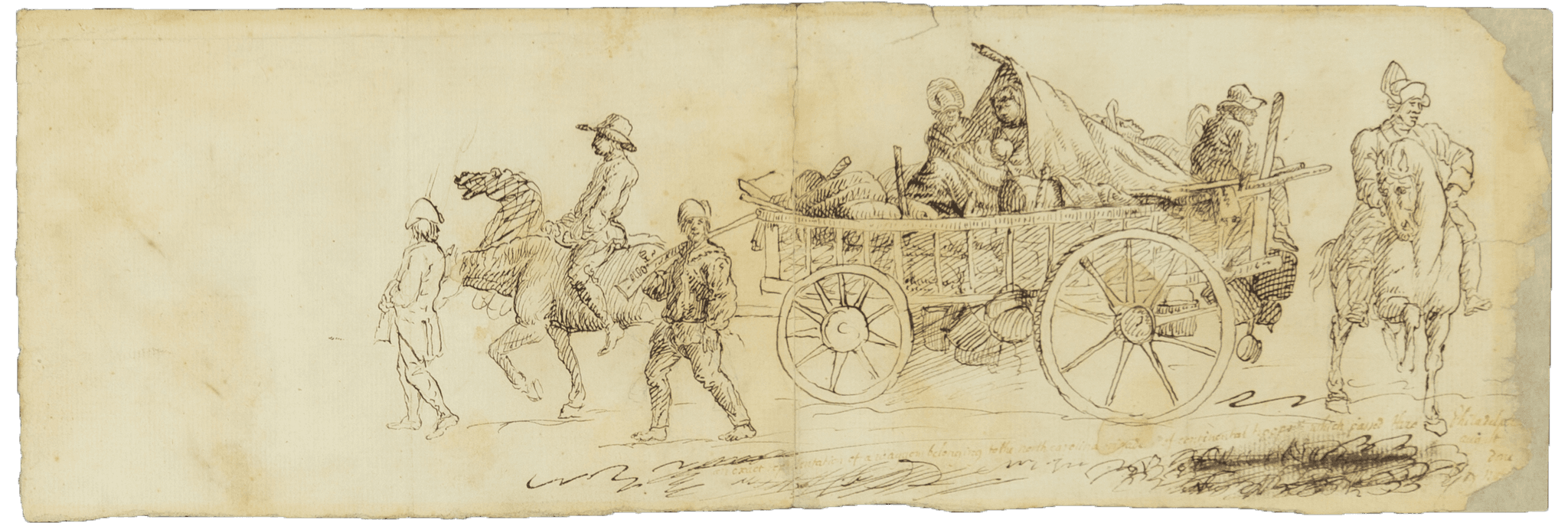An eyewitness pen-and-ink sketch depicting Continental Army soldiers and camp followers marching through Philadelphia on Aug. 25, 1777, which has never been documented or published by historians, has been donated to the Museum of the American Revolution. This sketch is the first wartime depiction of North Carolina troops known to exist, and only the second-known depiction of female camp followers of the Continental Army done by an eyewitness.
“This sketch is extremely important to our understanding of the daily operations of the Continental Army,” said Matthew Skic, Curator of Exhibitions at the Museum, who worked to authenticate the sketch and identify its creator after discovering it in a private collection. “It helps us visualize the everyday lives of these troops – the joyous, the difficult, and the mundane.”
This discovery brings to light a lively scene which newspaper accounts confirm occurred the morning of Aug. 25, 1777, as the North Carolina Brigade and its commander, Brigadier General Francis Nash, marched to join the rest of General George Washington’s army before seeing action in both the Battle of Brandywine (Sept. 11, 1777) and the Battle of Germantown (Oct. 4, 1777).
The sketch shows two soldiers marching alongside an open-sided wagon, as well as a commissioned officer and a wagon driver mounted on horseback. Inside the wagon sit two women, one holding an infant, amongst various equipment and baggage of the brigade. Two men are also depicted riding on the back of the wagon.
The inclusion of female camp followers – who shared life on campaign with enlisted husbands and fathers and supported the troops by sewing, doing laundry, and selling food – exemplifies a direct defiance of known regulations at the time about how women following the army could use wagons. Earlier in August, before the march depicted in the sketch took place, Washington himself brought up issues of women and children slowing down his troops, calling them “a Clog upon every movement.”
On the reverse of the North Carolina Brigade sketch are five studies of two male figures, one brandishing a sword and the other engaged in a fist fight. Artists frequently sketched studies like these when they were working on larger works, as it allowed them to try out different poses or details and to get a sense of the scale of the larger drawing or painting.
